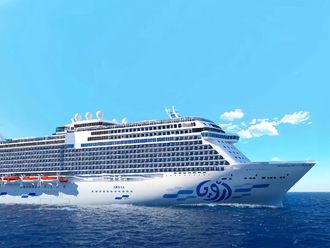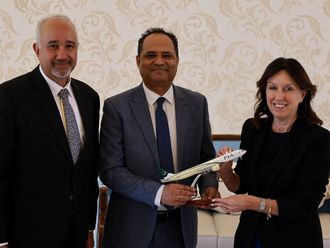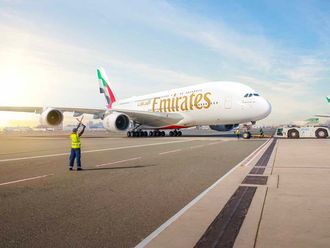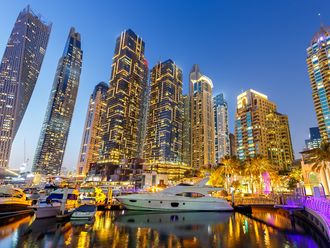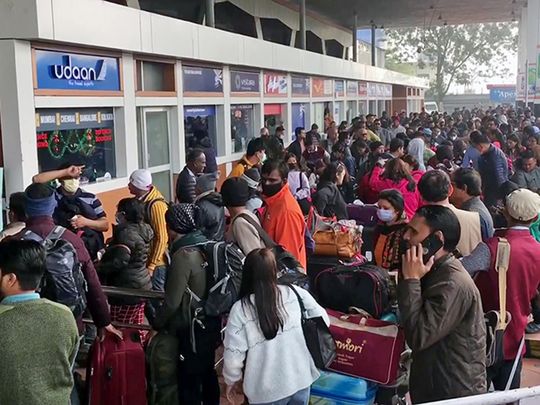
Dubai: How do you tap the tourism potential of Indian travelers?
The fifth largest economy in the world, India is home to 1.44 billion people - and 27.3 million people travelled out of the country in 2023. That number is expected to reach 30 million this year, which is why there’s so much interest in Indian tourists. And became a talking point at the Arabian Travel Market on Monday.
At the session – ‘Unlocking the true potential of Indian travelers – the moderator Virendra Jain, co-founder and CEO of Videc, set the ball rolling, saying that the Indian travel market is a $49 billion opportunity that is estimated to grow to $72 billion by FY-2026, driven mainly by a young and digitally-savvy population.
Jain said: “India right now has 93 million active passports. 14 million of them were issued in 2023, seven times the number of passports India issued in 2000, which is symbolic of the upward trajectory of travellers coming from India.”
Jain was joined by Ross Veitch, CEO and co-founder of Wego, Raj Rishi Singh, CMO and CBO-Coporate of MakeMyTrip, and Ankur Garg, Chief Commercial Officer of Air India Express.
At the end of 50 minutes, they were sure that the profile of Indian travellers had changed, with leisure and tourism forming a critical avenue for spending.

Within 5 hours
One uniform observation was the preference of Indians for destinations that require only five hours of flying time. That makes the UAE a destination of choice, and Dubai is seen more like a domestic destination.
How do you attract the Indian tourist? Five ways, maybe.
Cheap and easy visas, affordability, direct flights and payment systems are among the factors travellers take into account before deciding on a destination.
Ease the visa regime
Veitch insisted that the visa regime is a critical factor in attracting Indian travellers. A Schengen visa will take 30 days, if you are lucky, and a US visa appointment would take up to 365 days, he said.
“The best thing you could do if you want to stimulate this market is to rationalise your visa policies,” Veitch added.
Garg concurred, saying visa policies do matter. “The visa cost starts having a lot of product impact. We have seen countries with visas on arrival and countries where the visa cost is low. When the international destination is cheaper or at par with the domestic destinations, the decision will depend on the ease of getting the visa and the cost of visa,” the Air India Express official said.
What spurs Indians to travel abroad? Veitch says income is one of the main drivers.
“More than 50 million households in India are on more than $10,000 a month today. That number is growing at a rapid pace, and in another four years, it will add another 30 million households.
“So, with overall incomes going up, the number of people who can afford to travel outside is also going up.”
Garg said Indian travellers no longer come from only the metros but also from smaller cities around the country. “From Amritsar Jaipur, Lucknow, Varanasi, Indore and Goa, we have seen that kind of traffic in the last two to three years. I feel that a lot of growth is going to come from having non-stop connectivity from the next set of towns and cities in India to international destinations,” the chief commercial officer of Air India Express said.
Changes to travel patterns
Even the pattern of travel has changed. Rishi Singh pointed out that Indians now readily opt for weekend travel.
“Earlier, the Indian scenario was one long and one short vacation. This changed to multiple short vacations, and at times people skip long vacations. And so I think it’s affordability and how fast you can reach that place [decides the destination],” the MakeMyTrip official said.
Rishi Singh said one of their surveys showed that 85 per cent of the respondents were first-time outbound travellers, which translates into 27 million outbound passengers.
Earlier, the Indian scenario was one long and one short vacation. This changed to multiple short vacations...
“When you are travelling internationally, there is this external anxiety, especially if you’re a first-time traveller. So it’s important to have someone to support you during the journey. So we’ve been trying to build journeys, both through digital and otherwise, where we deal away with this insanity,” the MakeMyTrip official said.
Jain noted that the payment system is one area that requires more attention. “Founded in 2016, UPI in 2022 accounted for six times the value of transactions compared to debit and credit cards combined [in India]. It’s way ahead in growth right now; there are seven countries that accept UPI as a payment mechanism,” he said.
“Travel is a lifestyle revenue that grows as the economy grows. So, there’s a correlation between outbound departure and GDP per capita. There is a very clear trend over 30 years as the per capita income has grown, and so have the outbound departure numbers,” Jain added.
“The Indian government is doing the right things, from a macroeconomic point of view, to sustain the sort of growth needed to drive this sort of outbound numbers,” Veitch said.



